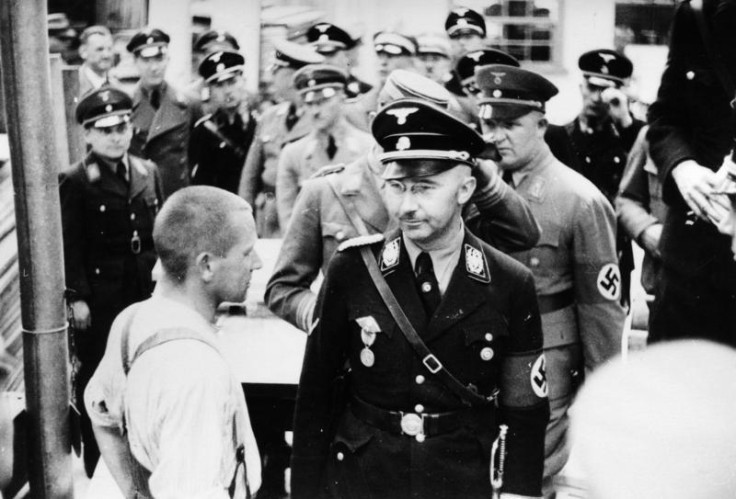VE Day: Top Nazis committed suicide rather than surrender at end of WW2
Cyanide poisoning was by far the most popular method of suicide for Nazis.
Victory in Europe Day, generally known as VE Day is celebrated on 8 May 1945 to mark the formal acceptance by the Allies of Nazi Germany's unconditional surrender of its armed forces. It marked the end of Second World War in Europe. The act of military surrender was signed on 7 May in France and on 8 May in Germany.
Realising that all was lost, on 30 April 1945, Adolf Hitler, the Nazi leader, committed suicide during the Battle of Berlin. It's reported that he asked SS doctor Werner Haase about the most reliable method of suicide. The doctor recommended the "pistol-and-poison method" which combines a dose of cyanide with a gunshot to the head.
Several witnesses reported hearing a loud gunshot at around 3.30pm. Hitler's valet, Heinz Linge was one of the first people inside the underground bunker and stated he could smell burnt almonds, indicating the presence of prussic acid, the liquid form of hydrogen cyanide.
Hitler's adjutant, SS-Sturmbannführer Otto Günsche, who was also present, stated that Hitler "…sat… sunken over, with blood dripping out of his right temple. He had shot himself with his own pistol, a Walther PPK 7.65".
But a documentary by director/producer Noam Shalev argues that Hitler's last days were not spent in his Berlin bunker, but in an Argentine hotel.
"We will never know the truth," Shalev said in an interview with the Jerusalem Post. "But there is enough evidence to build an alternative theory about what happened to Hitler."
Researcher on the film Revealed: Hitler in Argentina says: "No one believed the Russians' story of Hitler's suicide in the bunker… As early as the summer of 1945, there were headlines asking, 'Where is Hitler?' all over the world."
In the days and weeks that followed Hitler's death, there were many suicides of high-ranking officials as the Third Reich collapsed. One if the highest-ranking Nazis was Josef Goebbels, the reich minister of propaganda. On 1 May, he shot his wife and then himself by selbstmord – German for self-murder). The couple also killed their six children by giving them cyanide tablets.
Soon after, Heinrich Himmler, chief of German Police in the Reich Ministry of the Interior and the second most powerful man in Nazi Germany also took his own life. He was reputed as one of the officials most directly responsible for the Holocaust.

Hitler's second-in-command waited until he was in custody before committing suicide on 23 May. A photograph of Himmler lying dead in bed after biting on a cyanide pill was taken by Lance Corporal Guy Adderley of British Intelligence in 1945. The picture sold for around £3,000 at auction.
Adderley's official statement read: "The trick was to keep the prisoner so until the poison pill secreted between his teeth could be removed.
"A senior staff officer took control of the situation from Guy Adderley, with much noise and ceremony.
"Himmler became alarmed, crunched the poison pill, and that was the end of the story.
"This photograph was taken while he was still warm."

Hermann Goering, head of the Luftwaffe, managed to avoid death by hanging at the Nuremberg trials in 1946. An American, who was guarding the prisoner, claimed he unwittingly passed a cyanide capsule to the Nazi commander.
Herbert Lee Stivers told the Los Angeles Times that a German girl tricked him into smuggling a vial of liquid to Goering's cell hidden in a fountain pen, telling him it was medicine.
The day before his execution, after being sentenced to death for war crimes, a guard noticed Goering put a hand to his mouth and then start choking. He died shortly afterwards and was found with glass and cyanide traces in his mouth.
Goering left a suicide note which read: "I would have had no objection to being shot. However, I will not facilitate execution of Germany's Reichsmarschall by hanging! For the sake of Germany, I cannot permit this."
Cyanide poisoning was by far the most popular method of suicide for the Nazis, but others chose death by firearm, hand grenade, wrist slitting and hanging.
Many other prominent Nazis killed themselves after being captured. The list includes eight out of 41 National Socialist German Workers' Party (NSDAP) regional leaders, seven out of 47 higher SS and police leaders, 53 out of 554 army generals, 14 out of 98 Luftwaffe generals, and 11 out of 53 admirals in the Kriegsmarine all died rather than face defeat or imprisonment by the Allies.
© Copyright IBTimes 2025. All rights reserved.






















